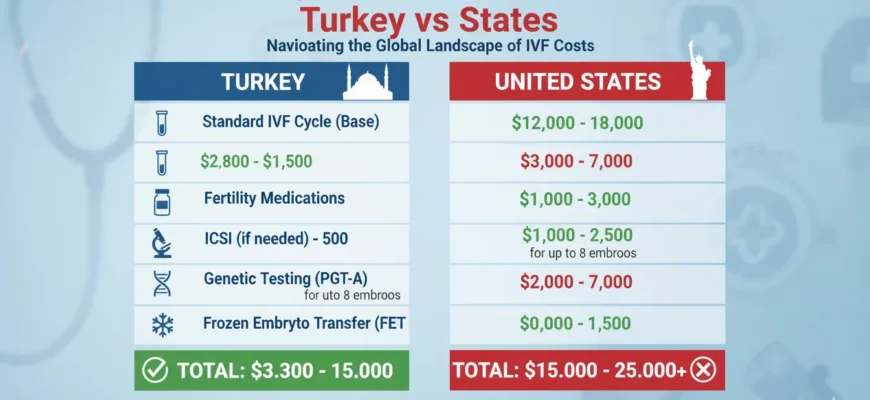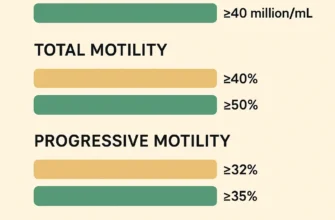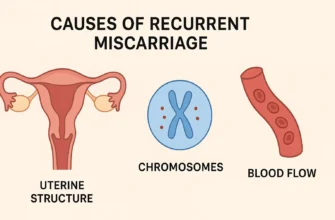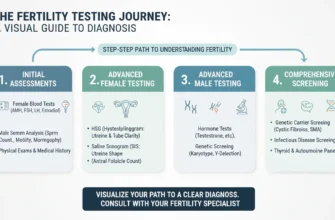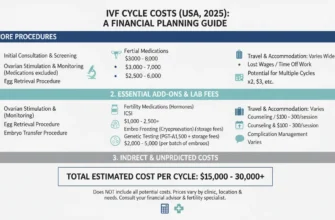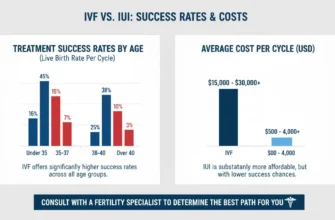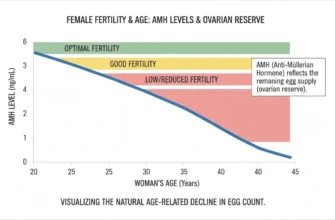Navigating the Global Landscape of IVF Costs
For countless individuals and couples, the path to parenthood leads to in vitro fertilization (IVF). This remarkable medical journey, however, often comes with a significant financial and emotional weight. As the global IVF services market was valued at $19.6 billion in 2023 and is projected to reach $47.9 billion by 2033, prospective parents are increasingly looking beyond their borders for accessible, high-quality care. This guide cuts through the complexity, offering a direct and detailed cost comparison between two major IVF destinations: the United States and Turkey.
The Growing Need for Fertility Treatment and Reproductive Health Solutions
The need for fertility treatment is more widespread than ever. In the United States alone, approximately 42% of adults report that they have either used fertility treatments or know someone who has. This represents a significant increase from 33% just five years earlier, reflecting growing awareness and acceptance of assisted reproductive technologies. This growing demand highlights a universal desire for family-building options, pushing against the barriers of biology and circumstance. As awareness increases, so does the search for effective and financially viable solutions.
Why Consider IVF Abroad? Understanding Medical Tourism and the Cost of IVF
The concept of traveling for medical care is not new, but fertility tourism is a rapidly expanding sector. The global fertility tourism market was estimated at $1.57 billion in 2024 and is projected to reach $6.18 billion by 2030, exhibiting a compound annual growth rate (CAGR) of 25.11%. The primary driver is cost. The staggering price of an IVF treatment cycle in countries like the USA compels many to seek alternatives. Destinations such as Turkey, Spain, Greece, and the Czech Republic have emerged as leaders, offering advanced medical technology and experienced specialists at a fraction of the domestic price.
Aims of This Guide: Deconstructing IVF Costs in Turkey vs. USA
This article aims to provide a transparent, side-by-side breakdown of the cost of IVF in Turkey compared to the United States. We will move beyond vague estimates to dissect what is included in standard packages, the price of common add-on procedures, and the underlying factors that create such a vast price disparity. Our goal is to empower you, the patient, with the clear, concise information needed to make an informed decision for your family-building journey.
Understanding the IVF Journey: Key Stages and Core Cost Components
Before comparing prices, it’s essential to understand what an IVF cycle entails. The process is a multi-stage medical procedure where costs can accumulate at each step. Knowing these components is the first step toward accurately evaluating what a clinic is offering.
A Brief Overview of the IVF Treatment Process
A standard in vitro fertilization cycle involves several key phases. It begins with ovarian stimulation, where fertility medications are used to encourage the ovaries to produce multiple eggs. This is followed by egg retrieval, a minor surgical procedure to collect the mature eggs. In the laboratory, these eggs are fertilized with sperm. The resulting embryos are then cultured for several days before the healthiest one is selected for the embryo transfer procedure, where it is placed into the uterus.
Identifying the Core Cost Components of IVF Services
The total cost of IVF is more than just a single fee. It’s a sum of various parts, each with its own price tag. The core costs typically cover:
- Initial consultations and diagnostic testing
- Fertility medications for ovarian stimulation
- Monitoring appointments (ultrasounds and bloodwork)
- The egg retrieval procedure
- Laboratory fees for fertilization and embryo culture
- The fresh embryo transfer
Additional procedures like Intracytoplasmic Sperm Injection (ICSI), genetic testing, or embryo freezing represent separate costs that can significantly increase the final bill.
USA IVF Cost Breakdown: Premium Care, Premium Price
The United States is a world leader in medical innovation and advanced technology, but this comes at a steep price, particularly in the field of reproductive medicine. The cost of IVF in the U.S. is among the highest globally, creating a significant barrier for many.
Average Base IVF Cycle Cost in the United States
For a single, complete IVF cycle, patients in the U.S. can expect to pay anywhere from $12,000 to $18,000 for the base procedure. However, this figure often excludes essential components like medications, which can add $3,000 to $7,000 to the total. When factoring in all components, the total cost per cycle typically ranges from $15,000 to $30,000. In 2023, IVF led to over 95,860 babies born in the U.S., demonstrating its effectiveness but also highlighting the immense collective cost.
Deconstructing the USA Price Tag: What You’re Paying For
The high cost of IVF in the USA is driven by several factors. High salaries for fertility specialists and embryologists, expensive medical malpractice insurance, stringent regulatory compliance, and the high operational costs of running a state-of-the-art clinic all contribute. Furthermore, the fragmented nature of U.S. healthcare means prices are often not bundled, leading to separate bills for consultations, procedures, lab work, and anesthesia.
Common Add-On Procedures and Their Significant Costs
What starts as a base price can quickly escalate with necessary add-ons. ICSI, a technique used for male factor infertility, can add $1,000-$2,500. Preimplantation Genetic Testing (PGT) to screen embryos for chromosomal abnormalities typically costs $3,000-$7,000. Embryo freezing and annual storage can add another $800-$2,000 upfront, with recurring storage fees of $500-$1,200 per year. A subsequent frozen embryo transfer (FET) is a separate procedure costing $3,000-$5,000.
The High Cost of Donor Options and Specialized Cycles
For patients requiring donor eggs, the costs skyrocket. Using an egg donor in the U.S. can add $25,000 to $45,000 to the total IVF cost, covering donor compensation, medical screening, legal fees, and the IVF cycle itself. This can push the total price for a single donor egg cycle well over $50,000.
Geographical Variations and Clinic-Specific Pricing in the USA
IVF costs are not uniform across the United States. A clinic in a major metropolitan area like New York or Los Angeles will almost certainly charge more than one in a smaller city. The reputation and success rates of the IVF clinics also play a significant role, with top-tier centers commanding premium prices. This variation makes it crucial for a patient to research multiple options even within the country.
Turkey IVF Cost Breakdown: Quality Care at a Fraction of the Price
Turkey has firmly established itself as a global hub for medical tourism, welcoming approximately 1.5 million international health tourists in 2024, generating over $3 billion in revenue. The country’s fertility treatment sector is a major part of this success, offering a compelling combination of modern technology, experienced specialists, and remarkable affordability.
Average Base IVF Cycle Cost in Turkey
The most striking difference is the price. The average cost of a standard IVF cycle in Turkey ranges from $2,500 to $4,000 (approximately €2,500 to €3,500). This price is often part of a package that is far more inclusive than what is typically offered in the U.S., making it an incredibly attractive option for international patients. Turkey’s significant role is underscored by the fact that when it reported data between 2008-2012, it performed approximately 8% of all European assisted reproductive technology (ART) cycles, making it the sixth-highest contributor in Europe.
Deconstructing the Turkey Price Tag: Inclusions and Exclusions
Turkish IVF clinics frequently offer packages that bundle services. A typical package often includes the initial consultation, all monitoring, egg retrieval, anesthesia, standard fertilization, and the fresh embryo transfer. Some IVF clinics even include ICSI in their base price, recognizing it as a standard of care. Exclusions usually involve fertility medications (which are still significantly cheaper than in the U.S., typically $800-$1,500), genetic testing, and embryo freezing.
Common Add-On Procedures and Their Associated Costs
The cost of add-on procedures in Turkey is also substantially lower. ICSI is often included or costs an additional $300-$500 if charged separately. Preimplantation Genetic Testing (PGT) typically ranges from $2,000-$3,000. Embryo freezing and one year of storage might cost around $500-$1,000. A frozen embryo transfer cycle is also more affordable, generally priced between $1,000 and $1,500.
Key Difference: Regulatory Framework for Donor Options in Turkey
It is crucial for any patient to understand the legal landscape. In Turkey, the use of donor eggs, donor sperm, and surrogacy is prohibited by law. This is a significant difference from the USA, Spain, Greece, or the Czech Republic, where these options are widely available. Patients requiring third-party reproduction must consider other destinations.
The Impact of All-Inclusive Treatment Packages in Turkey
Many clinics in Turkey cater specifically to international patients by offering all-inclusive packages. These may include not only the medical procedures but also airport transfers, hotel accommodations, and translation services. This approach simplifies the logistics, reduces stress, and provides a clear, upfront cost, minimizing the risk of unexpected expenses.
Direct Cost Comparison: Turkey vs. USA – A Side-by-Side Breakdown
Seeing the numbers side-by-side reveals the stark reality of the cost disparity. For many, the financial savings in Turkey are not just marginal; they are life-changing, often making treatment possible when it would have been out of reach in the U.S.
Comparative Table: Core IVF Treatment Costs (USA vs. Turkey)
| Service | Average Cost in USA | Average Cost in Turkey |
|---|---|---|
| Standard IVF Cycle (Base) | $12,000 – $18,000 | $2,500 – $4,000 |
| Fertility Medications | $3,000 – $7,000 | $800 – $1,500 |
| Total Estimated Base Cycle | $15,000 – $25,000+ | $3,300 – $5,500 |
Comparative Table: Key Add-On Procedures Costs (USA vs. Turkey)
| Procedure | Average Cost in USA | Average Cost in Turkey |
|---|---|---|
| ICSI | $1,000 – $2,500 | $0 (often included) – $500 |
| Genetic Testing (PGT) | $3,000 – $7,000 | $2,000 – $3,000 |
| Embryo Freezing (1 year) | $800 – $2,000 | $500 – $1,000 |
| Frozen Embryo Transfer (FET) | $3,000 – $5,000 | $1,000 – $1,500 |
Analyzing the Cost-Effectiveness Ratio
While success rates are paramount, cost-effectiveness provides a clearer picture of value. Turkey’s IVF success rates are competitive, with fresh embryo transfers showing a 30.6% live birth rate, frozen embryo transfers at 40.1%, and PGT cycles achieving 50.7% success. These rates are comparable to international standards. When you consider that a patient could potentially undergo three to four cycles in Turkey for less than the cost of a single cycle in the U.S., the value proposition becomes exceptionally clear. The investment per attempt is dramatically lower, increasing the cumulative chance of success for a fixed budget.
Real Patient Cases: Illustrative Cost Scenarios
Consider a patient requiring IVF with ICSI and genetic testing. In the USA, the total cost could easily approach $25,000-$30,000. In Turkey, the same set of procedures might total around $6,000-$7,500. Even after factoring in $2,000-$3,000 for flights and accommodation, the total cost is under $10,000, representing a saving of over 65%. These real-world scenarios are what drive thousands of patients to seek care abroad.
Why Such a Price Disparity? A Deep Dive into Factors
The dramatic price difference between the USA and Turkey is not arbitrary. It is rooted in fundamental economic, regulatory, and structural differences between the two countries.
Cost of Living and Operational Expenses
The most significant factor is the difference in the cost of living and general operational expenses. Everything from clinic rent and utilities to administrative staff salaries is substantially lower in Turkey. These savings are passed directly on to the patient, forming the foundation of the lower treatment prices.
Medical Infrastructure, Advanced Technology, and Medical Devices
Some may assume lower cost means inferior technology, but this is a misconception. Top Turkish IVF clinics are equipped with the same advanced technology and medical devices found in leading U.S. centers. Turkey has over 40 internationally accredited healthcare facilities, including JCI (Joint Commission International) accreditation, reinforcing its reputation as a top-tier medical destination. High patient volume allows these clinics to invest in the latest equipment while benefiting from economies of scale.
Regulatory Environment and Ethical Considerations
The U.S. healthcare system operates within a complex and litigious regulatory environment, which drives up insurance and administrative costs. While Turkey has its own robust regulations focused on patient safety, the overall administrative burden and associated costs are lower. Ethical considerations, particularly the prohibition of donor services in Turkey, also shape the landscape and cost structure.
Medical Professional Salaries and Training
Salaries for highly trained fertility specialists, embryologists, and nurses are significantly higher in the United States compared to Turkey. While Turkish medical professionals are well-trained and highly experienced, with many holding international certifications, the difference in national salary benchmarks is a major contributor to the overall cost disparity of the fertility treatment.
Conclusion
The decision of where to pursue IVF treatment is deeply personal, balancing financial realities with medical needs and personal comfort. The United States offers exceptional, cutting-edge care but at a price that is prohibitive for many. In stark contrast, Turkey provides a compelling alternative, delivering high-quality fertility treatment with advanced technology and experienced specialists at a fraction of the U.S. cost.
For American patients and others facing high domestic prices, the financial advantages of IVF in Turkey are undeniable. The potential to save $15,000-$20,000 or more per cycle can mean the difference between being able to afford one cycle versus multiple, significantly increasing the chances of a successful outcome. While factors like travel and the legal prohibition of donor services in Turkey must be considered, the value proposition is clear.
Turkey’s medical tourism infrastructure is well-established, with comprehensive support systems for international patients including multilingual staff, accredited facilities, and all-inclusive packages that simplify the journey. By conducting thorough research, vetting IVF clinics through international accreditation bodies, and asking detailed questions about success rates, included services, and post-treatment support, you can make an informed choice that aligns your dream of parenthood with your financial well-being.

